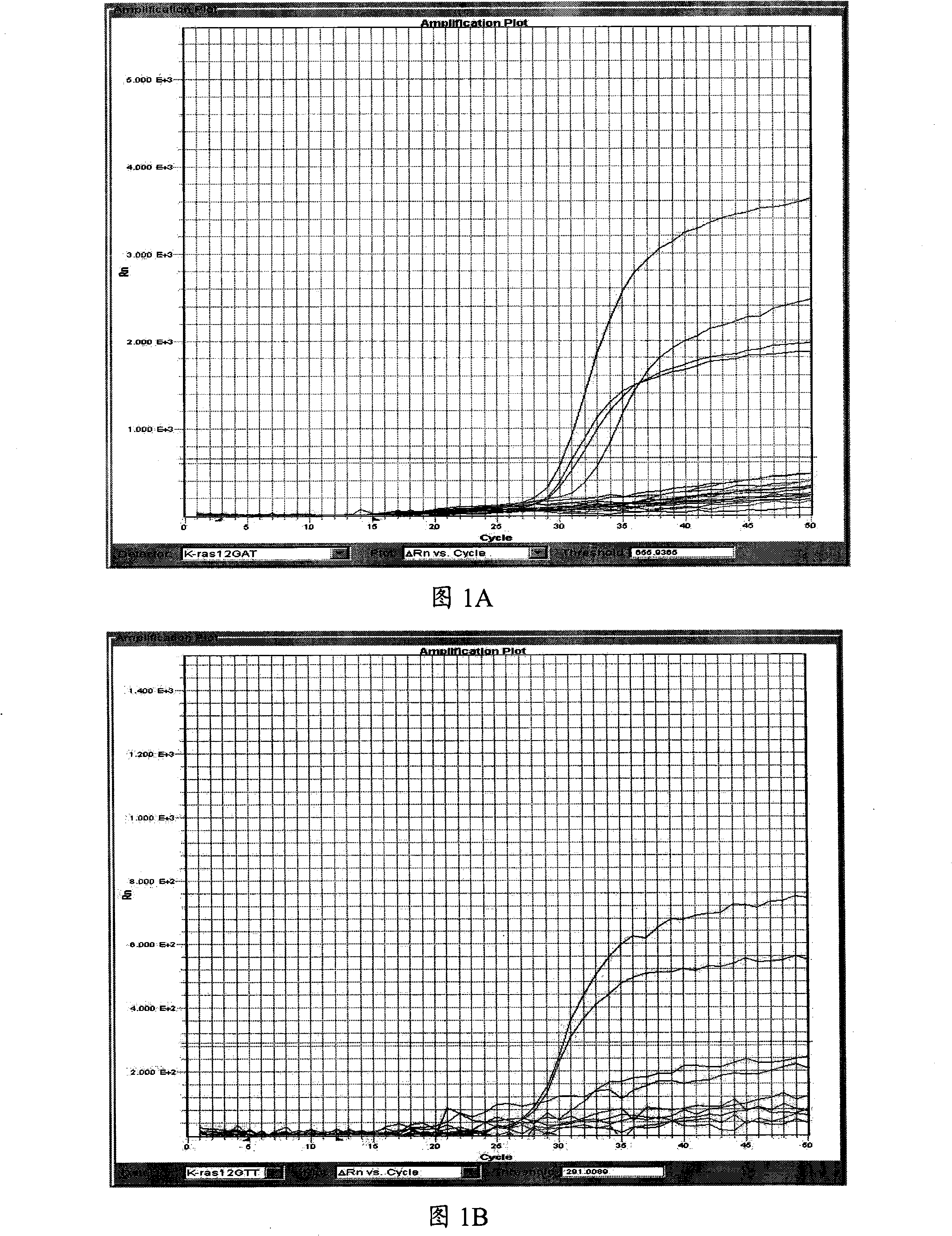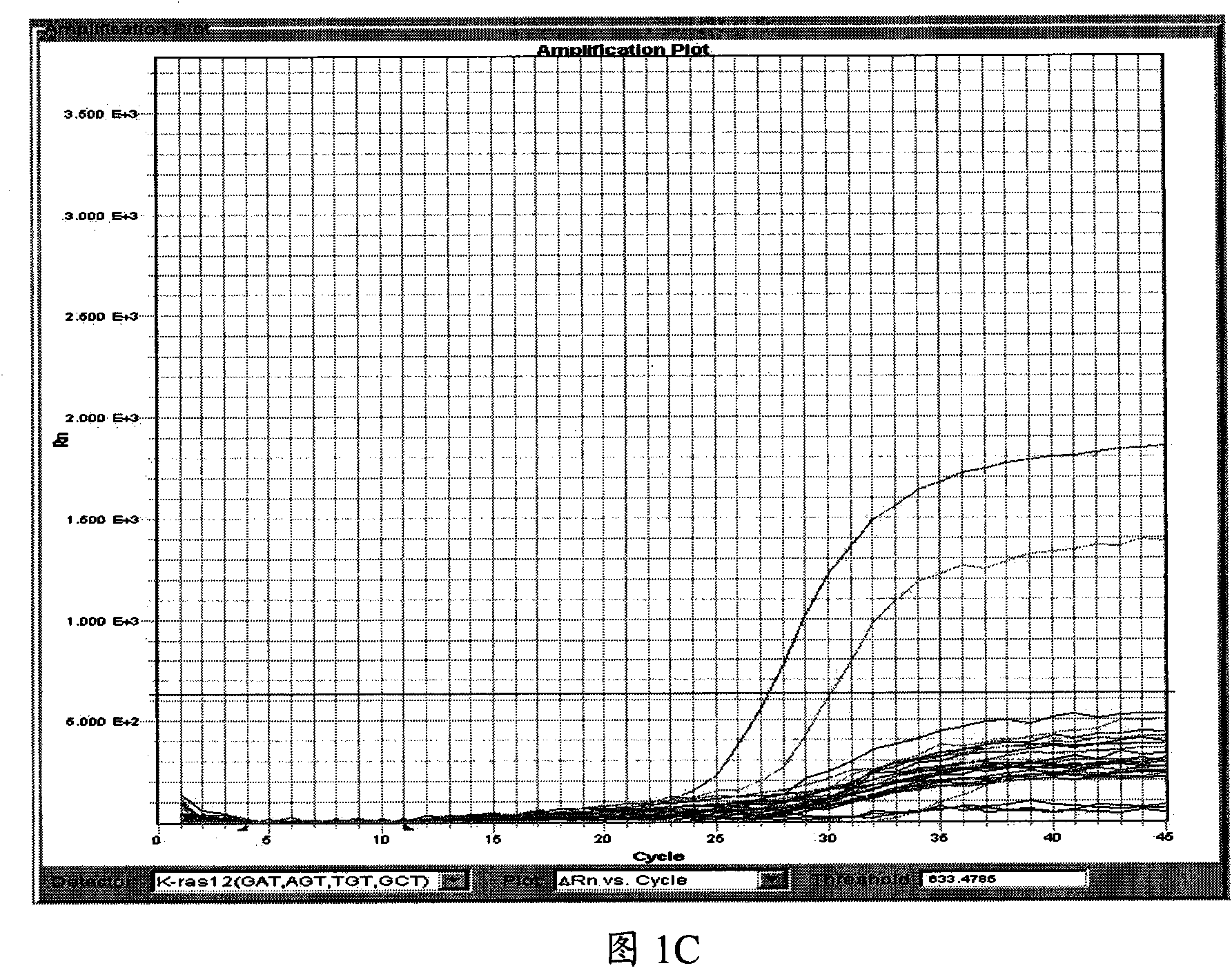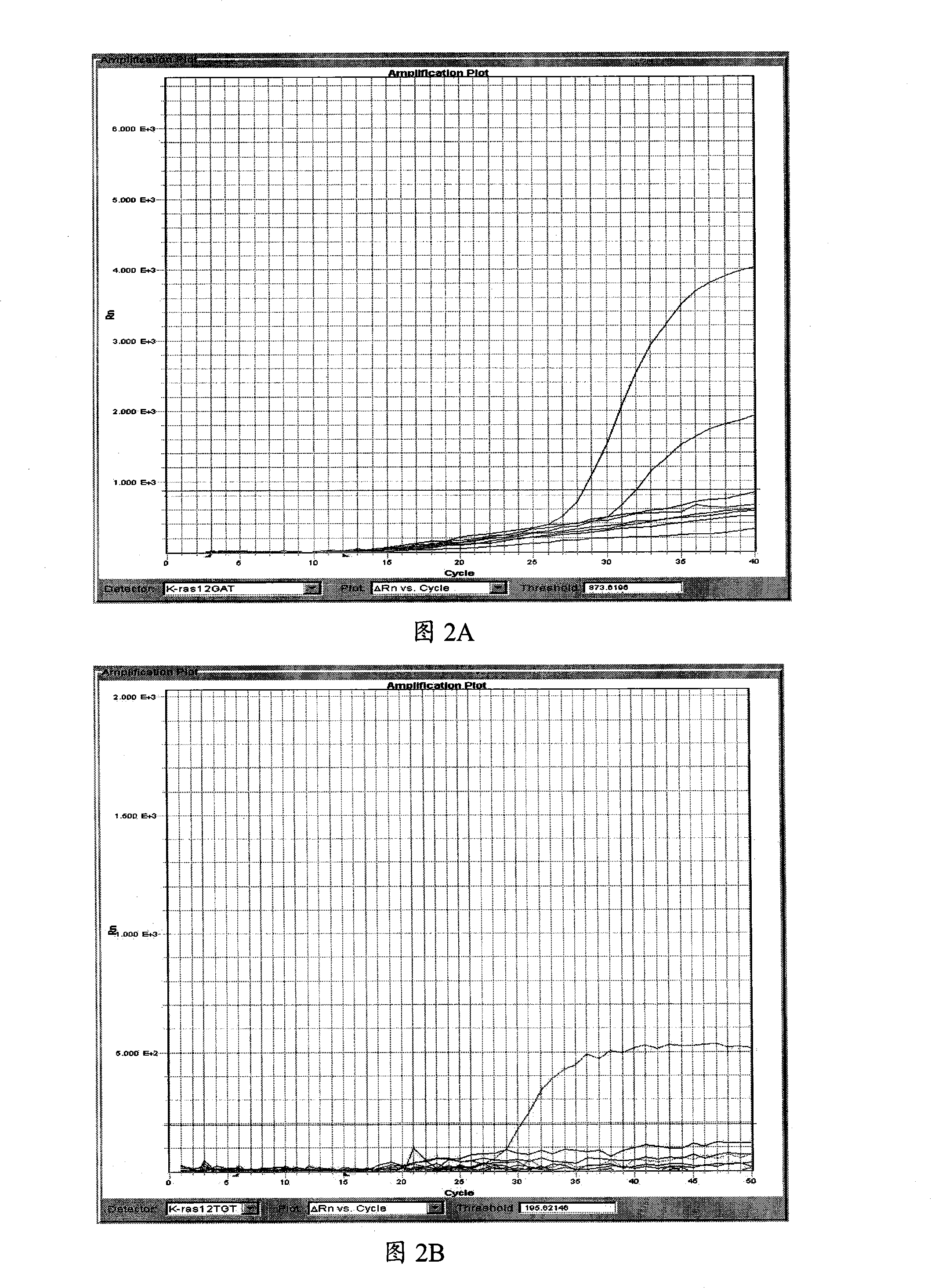K-Ras gene mutation typing fluorescence quantitative PCR detection kit and detection method thereof
A detection kit and fluorescence quantitative technology, applied in the field of molecular biology, can solve problems such as easy contamination, limited sample size, hazards to operators and the environment
- Summary
- Abstract
- Description
- Claims
- Application Information
AI Technical Summary
Problems solved by technology
Method used
Image
Examples
Embodiment 1
[0088] Example 1: Fluorescent quantitative PCR (FQ-PCR) was used to detect four base substitution mutations of the 12th codon of the KRAS gene (codon 12GGT→GAT, GGT→GTT, GGT→GCT).
[0089] Design a specific Allglo that can specifically detect the above three base substitution mutations TM One fluorescent quantitative detection probe and one pair of PCR primers. The sequences of each probe and primer are as follows:
[0090] The PNA sequence is PNA probe-5'-CCTACGCCACCAGCTCC-3', as shown in SEQID NO A0 in the sequence listing;
[0091] Mutant KRAS-Allglo targeting the GAT-12 codon TM The fluorescent quantitative detection probe sequence is: 5'-MAR-TGGAGCTGATGGCG-MAR-3', as shown in SEQ ID NO A3 in the sequence listing;
[0092] Mutant KRAS-Allglo targeting the GTT-12 codon TM The fluorescent quantitative detection probe sequence is: 5'-JUP-GTTGGAGCTGTTGGCGT-JUP-3', as shown in SEQ ID NO A4 in the sequence listing;
[0093] Mutant KRAS-Allglo targeting the GCT-12 codon TM T...
Embodiment 2
[0099] Embodiment 2: Detection of a base substitution mutation (codon 13GGC→GAC) at the 13th codon of the KRAS gene by fluorescent quantitative PCR, and three base substitution mutations at the 12th codon (codon 12GGT→GCT, GGT→AGT, GGT→CGT)
[0100] Design a specific Allglo that can specifically detect the above four base substitution mutations TM One fluorescent quantitative detection probe and one pair of PCR primers. The sequences of each probe and primer are as follows:
[0101] The PNA sequence is PNA probe-5'-CCTACGCCACCAGCTCC-3', as shown in SEQID NO A0 in the sequence listing;
[0102] Mutant KRAS-Allglo targeting the GAC-13 codon TM The fluorescent quantitative detection probe sequence is: 5'-MAR-AGCTGGTGACGTAGGC-MAR-3', as shown in SEQ ID NO B3 in the sequence listing;
[0103] Mutant KRAS-Allglo targeting the TGT-12 codon TM The fluorescent quantitative detection probe sequence is: 5'-JUP-GTTGGAGCTTGTGGCGT-JUP-3', as shown in SEQ ID NO B4 in the sequence listing...
PUM
 Login to View More
Login to View More Abstract
Description
Claims
Application Information
 Login to View More
Login to View More - R&D
- Intellectual Property
- Life Sciences
- Materials
- Tech Scout
- Unparalleled Data Quality
- Higher Quality Content
- 60% Fewer Hallucinations
Browse by: Latest US Patents, China's latest patents, Technical Efficacy Thesaurus, Application Domain, Technology Topic, Popular Technical Reports.
© 2025 PatSnap. All rights reserved.Legal|Privacy policy|Modern Slavery Act Transparency Statement|Sitemap|About US| Contact US: help@patsnap.com



